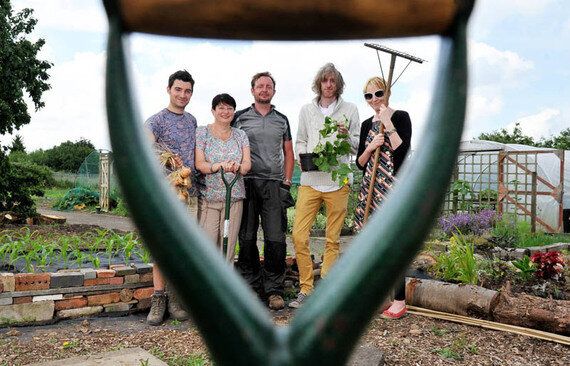Last week's budget announcement was peppered with George Osborne's new catchphrase - long-term solutions to long-term problems are needed, he repeatedly said.
The housing crisis is one of those long-term problems the Chancellor hopes to tackle with his 'in it for the long-haul' attitude and his commitment to increasing stamp duty on second homes and buy-to-let properties and directing some of the cash to help community-led housing projects in rural and coastal towns and villages is encouraging.
It's encouraging because it shows the government is finally listening to our calls - and the calls of other organisations - to recognise the value of community-led housing, but the Chancellor needs to widen the scope if we really are to reap the benefits.
Acute housing need and the unaffordability of homes - whether for sale or rent - is a problem right across the country and limiting this investment to coastal and rural communities fails to deal with the wider issue. The Chancellor would argue that people living in Cornish seaside towns feel the impact of people buying up second homes more keenly but there is a strong case to invest in community-led housing in all neighbourhoods, including in city centres where the buy-lo-let market is rife.

Community-led housing is housing designed and managed by local people, which meets the needs of the community
Local communities across the UK are leading the way to more affordable housing by setting up and managing their own housing developments. Their projects tackle the housing crisis head-on, offering local people access to new and refurbished rented affordable housing, and they control properties in the long term so that they are not sold off or snapped up by buy-to-let landlords.
We've seen initiative after initiative to encourage more large scale housing development, with limited impact on the number of homes built, developers accused of land banking, and local authorities reluctant to approve large new developments. It's time we turned to the small is beautiful principle; smaller community based development, but much more of it, is an important but so far overlooked part of the solution.
The newly-opened Rock House in Hastings is the first building of its kind with capped rents to provide an affordable space in the town centre for the long term. Gentrification of the run-down seaside town has meant that housing prices are beginning to soar, pricing local people out of the area. But after 18 months of renovation work, Rock House ¬- a converted 1960s office block that once housed journalists for the Hastings and St Leonards Observer newspaper - opened its doors earlier this month, providing genuinely affordable housing and work space with a sea view.
The White Rock Neighbourhood Ventures company, which owns the nine-storey building, created the development after consulting with local people and businesses and has set rents at Hastings' currently affordable levels and capped in line with inflation, protecting them against the sky-high prices which inevitably arrive when the flat whites and fixed-geared bikes move down from London.
In Birmingham communities are transforming substandard housing and Witton Lodge Community Association's commitment to providing fit housing for people in the Perry Common neighbourhood has led to investment in a previously run-down urban area and the development of nearly 900 homes. Witton Lodge itself is a community landlord with 167 homes - and more on the way - and has played a significant part in regenerating this deprived part of Birmingham as well as helping to meet local housing need. Two decades of hard work by the community association and the residents lobbying Birmingham City Council and developers has brought life back into the neighbourhood and provided a mix of housing to provide much-needed homes for local people.

Saffron Lane Neighbourhood Council is providing environmentally friendly social housing, along with a community garden
Leicester-based community enterprise Saffron Lane Neighbourhood Council is combining its green ethos with its commitment to providing affordable homes by building Europe's biggest social housing eco-development in an area formerly known as 'the Mud Dumps'. Formerly labelled a blight on the community, the area is now home to a thriving community garden and construction is underway on 50 carbon neutral, environmentally friendly homes for young people and families.
Community-led housing has the potential to empower communities and to deliver housing projects that people care about, which meet local needs and which maximise the financial and social benefits to support the wider regeneration of an area. It can provide jobs and opportunities for local people and boost the local economy, is a genuinely achievable option for many neighbourhoods and should be promoted as a mainstream option in housing development, in keeping with the Chancellor's vision.
